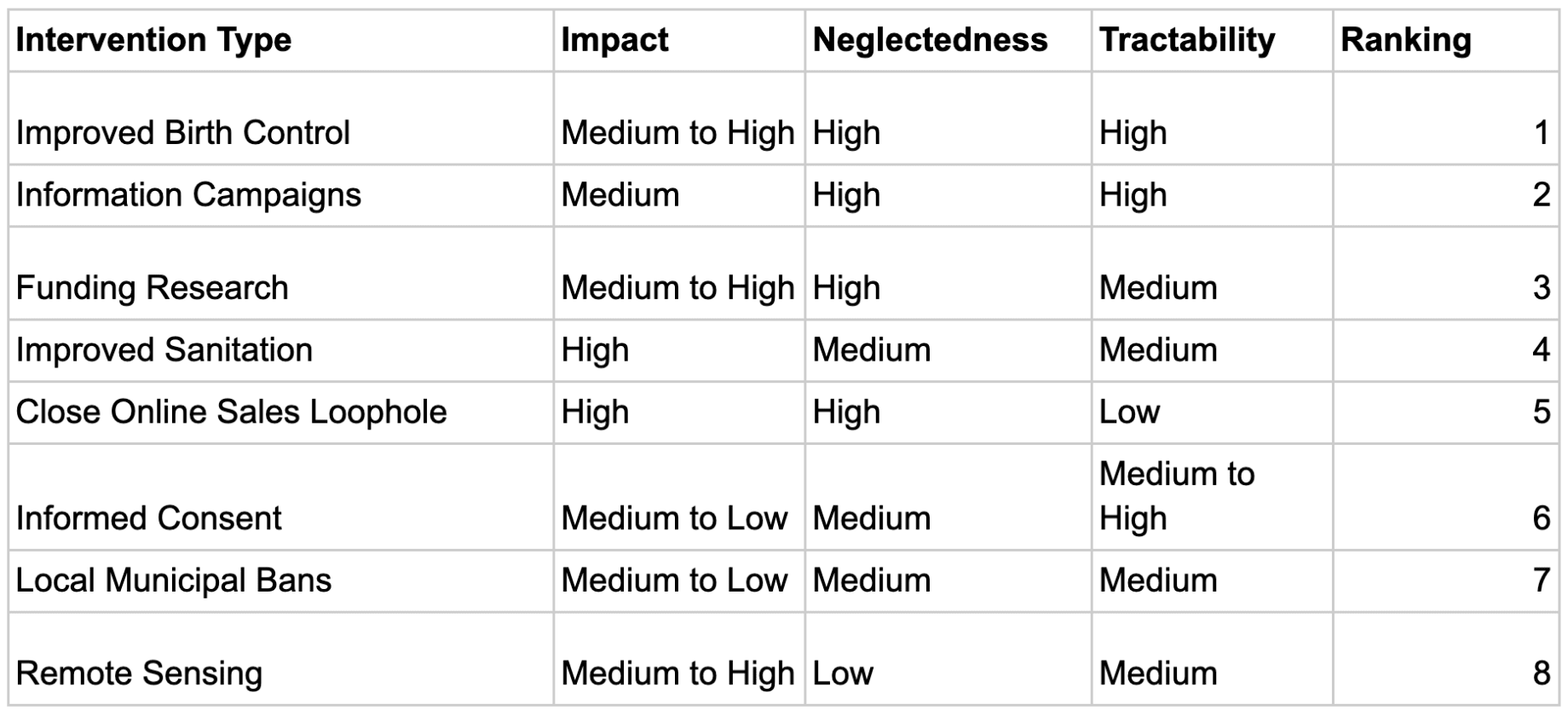Paths to reducing rodenticide use in the U.S.
This is the third report in a sequence of reports on reducing the use of rodenticide poisons. It is not necessary to have read the previous reports to read this one, although this report will take for granted conclusions that were discussed and weighed in depth in the previous reports. Part 1 describes why rodenticides are crueler to rodents and more dangerous for human children, pets, and wildlife than most alternative methods for removing rodents from homes, businesses, and farms. Part 2 explains why both consumers and businesses have strong incentives to continue relying on rodenticides. This report describes and ranks interventions to reduce rodenticide use in the U.S. according to their expected impact, neglectedness, and tractability. We leave aside how the interventions we discuss might change attitudes toward pest populations in the long term due to a lack of relevant evidence.
The report is grouped into sections by the class of intervention: Legislative interventions, Information campaigns, Technological disruption, and Funding research. We are pessimistic about the legislative interventions that severely restrict legal rodenticide use. For example, California's recent ban on second-generation anticoagulant rodenticides (SGARs) is riddled with exemptions and may increase the use of alternatives that are even crueler to rodents. However, there are less controversial reforms, such as sanitation reform, that would reduce some rodenticide use, especially at the local level.
Our top recommended intervention is investing in improved rodent birth control. [part 1] of this sequence was enthusiastic about existing EPA-approved rodent birth control ContraPest, but in part 2 we reported additional findings that led us to conclude that ContraPest is too expensive and cumbersome to replace the role that rodenticides currently play. Birth control baits that are cheaper and more versatile than Contrapest could replace rodenticide in many (though probably not all) situations.
Our runner-up recommendation is to run digital information campaigns to educate the public on the costs and dangers of rodenticides. Digital advertising is cheap, and can quickly reach millions of people without having to first develop personal relationships with voters. Although the relatively grassroots approach of extant anti-rodenticide activism may be a sign that more impersonal approaches would not work, there is value in testing how much can be accomplished through mass communication alone.

Table 1: A summary of the overall ranking of the 10 interventions types analyzed above. We scored Impact, Neglectedness, and Tractability holistically using High (5), Medium-High (4), Medium (3), Medium-Low (2), and Low (1), which were converted to a 5-point scale. The rankings in the right-most column are a result of adding up the numeric values that Intervention Type received in Impact, Neglectedness, and Tractability. Ties were resolved by holistically considering which intervention we believed was overall higher priority.
We acknowledge that some interventions that do not look promising on their own may increase the tractability of more promising interventions. For example, obtaining local- and state-level bans may be a hassle and the results may be imperfect, but legal pressure to find alternatives may spur investment in new technology that is both more effective and humane than rodenticides. Readers may also have a personal advantage in implementing certain interventions and therefore may want to prioritize implementing those even if other interventions are more highly ranked in this report.
This research is a project of Rethink Priorities. It was written by Holly Elmore. If you’re interested in RP’s work, you can learn more by visiting our research database. For regular updates, please consider subscribing to our newsletter.

